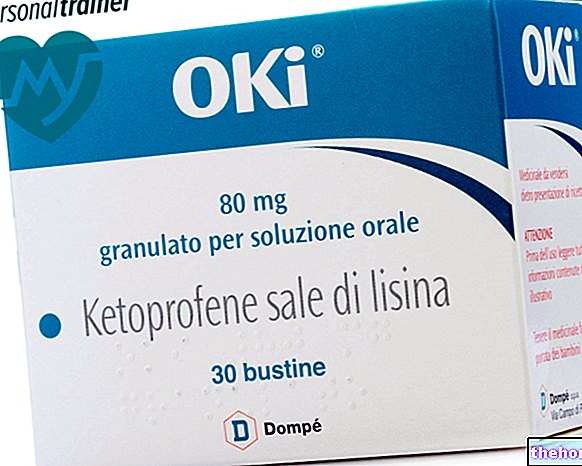Active ingredients: Cinnarizine
STUGERON 25 mg tablets
TUGERON 75 mg / ml oral drops solution
STUGERON 75 mg hard capsules
Why is Stugeron used? What is it for?
PHARMACOTHERAPEUTIC CATEGORY
Other drugs of the nervous system, antivertigo preparations
THERAPEUTIC INDICATIONS
Tablets and Oral Drops
- Disorders of cerebral circulation, in particular from arteriosclerosis
- Alterations of balance, of central and peripheral origin
- Adjuvant in the therapy of peripheral vasculopathies
Capsules
- Therapy of peripheral vasculopathies
- Disorders of cerebral circulation, in particular from arteriosclerosis
Contraindications When Stugeron should not be used
Hypersensitivity to the active substance or to any of the excipients.
Acute stroke of the brain.
Precautions for use What you need to know before taking Stugeron
STUGERON could cause epigastric pain (pain localized to the upper part of the stomach): taking it after meals may decrease this effect. In patients with Parkinson's disease STUGERON should only be administered if the therapeutic benefits outweigh the possible risk of aggravation of this disease. .
STUGERON may cause drowsiness, especially at the start of treatment. Therefore, caution is required when concomitantly administered alcohol or other central nervous system (CNS) depressants or tricyclic antidepressants.
Interactions Which drugs or foods can change the effect of Stugeron
Tell your doctor or pharmacist if you have recently taken any other medicines, even those without a prescription.
Alcohol, depressants of the central nervous system and tricyclic antidepressants.
The sedative effects of STRUGENON and the following substances may be potentiated when used concomitantly: alcohol, CNS depressants or tricyclic antidepressants.
Diagnostic interference.
If used up to 4 days before a skin test STUGERON can inhibit positive reactions to indicators of skin reactivity.
Warnings It is important to know that:
Pregnancy and breastfeeding
Ask your doctor or pharmacist for advice before taking any medicine.
Pregnancy
STUGERON should only be used in pregnancy if the therapeutic benefits justify the potential risk to the fetus.
Feeding time
As there are no data on the excretion of STUGERON in breast milk, it is not recommended for use during breastfeeding.
Effects on ability to drive and use machines
STUGERON may cause drowsiness, especially at the start of treatment. Therefore, particular caution is required during activities such as driving and operating machines.
Important information about some of the ingredients
STUGERON tablets contain sucrose.If you have been told by your doctor that you have an intolerance to some sugars, contact your doctor before taking this medicinal product.
STUGERON tablets contain lactose. If you have been told by your doctor that you have an intolerance to some sugars, contact your doctor before taking this medicinal product.
STUGERON oral drops contain small amounts of ethanol (alcohol) less than 100 mg per dose.
STUGERON oral drops contain methyl para-hydroxybenzoate and propyl para-hydroxybenzoate. They can cause allergic reactions, even delayed ones.
STUGERON capsules contain lactose If you have been told by your doctor that you have an intolerance to some sugars, contact your doctor before taking this medicinal product.
STUGERON capsules contain sunset yellow (E110). It can cause allergic reactions.
STUGERON Oral drops
For those who carry out sporting activities: the use of medicines containing ethyl alcohol can determine positive doping tests in relation to the alcohol concentration limits indicated by some sports federations.
Dose, Method and Time of Administration How to use Stugeron: Posology
Tablets: 1 - 2 tablets of 25 mg 3 times a day.
Drops: 1 ml = 25 drops = 75 mg of cinnarizine
- Disorders of cerebral circulation: 8-15 drops (24-45 mg) 3 times a day or 25 drops (75 mg) 2 times a day.
- Peripheral circulation disorders: 25 drops (75 mg) 2 - 3 times a day.
- Balance disorders: 8 drops (24 mg) 3 times a day or 12 drops (36 mg) 2 times a day.
- Mal d "auto: 8 drops (24 mg) to be taken half an hour before starting the journey and to be repeated every 6 hours.
Capsules: 2 - 3 capsules of 75 mg per day.
STUGERON should preferably be taken after meals. It is recommended not to exceed the recommended doses.
Since the effect of STUGERON on dizziness is dose-dependent, the dosage should be gradually increased.
Maintenance therapy
Symptomatic improvement can come quickly. However, a maintenance treatment may be necessary in order to obtain long-lasting results. Being well tolerated at therapeutic doses, STUGERON is also suitable for maintenance therapy.
In the treatment of elderly patients, the posology must be carefully established by the doctor who will have to evaluate a possible reduction of the dosages indicated above.
Overdose What to do if you have taken too much Stugeron
Symptoms and signs
Acute cinnarizine overdose has been reported with doses ranging from 90 to 2,250 mg. The most commonly reported signs and symptoms associated with cinnarizine overdose were: loss of consciousness ranging from somnolence to stupor and coma, vomiting, extrapyramidal symptoms and hypotonia. Convulsions occurred in a small number of children. In most cases, the clinical consequences were not serious but deaths have been reported after overdose of cinnarizine alone or in combination with other drugs.
Treatment
There is no specific antidote. In the event of an overdose, treatment is symptomatic and supportive. If deemed appropriate, activated charcoal may be administered. In case of accidental ingestion / intake of a dose of STUGERON, notify your doctor immediately or go to the nearest hospital. If you have any questions about the use of STUGERON, ask your doctor or pharmacist.
Side Effects What are the side effects of Stugeron
Like all medicines, STUGERON can cause side effects, although not everybody gets them.
Undesirable effects (also called adverse drug reactions) related to treatment with STUGERON are listed below.
Common side effects (reported by at least 1 in 100 but less than 1 in 10 patients):
- Drowsiness
- Gastric disturbances
- Weight gain
Uncommon side effects (reported by at least 1 in 1000 but less than 1 in 100 patients):
- Prolonged night rest
- Vomiting, post-meal discomfort, stomach pain
- Excessive sweating
- Tiredness
- Red itchy lesions or rash on the skin or greyish-white pustules in the mouth
Very rare side effects (reported by less than 1 in 10,000 patients):
- Movement difficulties such as jerking movements, muscle stiffness, tremor. These symptoms are also known as "extra-pyramidal symptoms"
- Red circular lesions or rash that may arise on areas of the skin exposed to sunlight
Compliance with the instructions contained in the package leaflet reduces the risk of undesirable effects.
Reporting of side effects
If you get any side effects, talk to your doctor or pharmacist. This includes any possible side effects not listed in this leaflet. Undesirable effects can also be reported directly via the national reporting system at "www.agenziafarmaco.gov.it/it/responsabili." By reporting side effects you can help provide more information on the safety of this medicine. "
Expiry and Retention
Expiry: see the expiry date printed on the package.
The expiry date indicated refers to the product in intact packaging, correctly stored.
WARNING: do not use the medicine after the expiry date indicated on the package.
Store below 25 ° C.
Medicines should not be disposed of via wastewater or household waste. Ask your pharmacist how to dispose of medicines you no longer use. This will help protect the environment.
Keep this medicine out of the sight and reach of children.
Child resistant closure (tablets and capsules): opaque blister
Composition and pharmaceutical form
COMPOSITION
STUGERON 25 mg tablets
One tablet contains:
active ingredient: cinnarizine 25 mg.
excipients: povidone, sucrose, lactose, corn starch, talc, hydrogenated vegetable oil.
STUGERON 75 mg / ml oral drops solution
One ml contains: active ingredient: cinnarizine 75 mg.
excipients: microcrystalline cellulose and sodium carmellose, ethyl alcohol, polysorbate 20, methyl para-hydroxybenzoate, propyl para-hydroxybenzoate, banana flavor, non-crystallizable liquid sorbitol, purified water.
STUGERON 75 mg hard capsules
One capsule contains:
active ingredient: cinnarizine 75 mg.
excipients: lactose, corn starch, talc, magnesium stearate. Capsule constituents: erythrosine (E127), sunset yellow (E110), yellow iron oxide (E172), titanium dioxide, gelatin.
PHARMACEUTICAL FORM AND CONTENT
STUGERON 25 mg tablets - Blister of 50 tablets
STUGERON 75 mg / ml oral drops solution - Bottle of 30 ml
STUGERON 75 mg hard capsules - Blister of 20 capsules
Source Package Leaflet: AIFA (Italian Medicines Agency). Content published in January 2016. The information present may not be up-to-date.
To have access to the most up-to-date version, it is advisable to access the AIFA (Italian Medicines Agency) website. Disclaimer and useful information.
01.0 NAME OF THE MEDICINAL PRODUCT
STUGERON
02.0 QUALITATIVE AND QUANTITATIVE COMPOSITION
STUGERON 25 mg tablets
One tablet contains: cinnarizine 25 mg
STUGERON 75 mg / ml oral drops solution
One ml contains: cinnarizine 75 mg
STUGERON 75 mg hard capsules
One capsule contains: cinnarizine 75 mg
For the full list of excipients see section 6.1
03.0 PHARMACEUTICAL FORM
Tablets
Oral drops, solution
Capsules
04.0 CLINICAL INFORMATION
04.1 Therapeutic indications
Tablets and Oral Drops
- Disorders of cerebral circulation, in particular from arteriosclerosis.
- Alterations of balance, of central and peripheral origin.
- Adjuvant in the therapy of peripheral vasculopathies.
Capsules
- Therapy of peripheral vasculopathies.
- Disorders of cerebral circulation, in particular from arteriosclerosis.
04.2 Posology and method of administration
Tablets: 1 - 2 tablets of 25 mg 3 times a day.
Drops: 1 ml = 25 drops = 75 mg of cinnarizine
- Disorders of cerebral circulation: 8-15 drops (24-45mg) 3 times a day or 25 drops (75mg) 2 times a day.
- Peripheral circulation disorders: 25 drops (75 mg) 2 - 3 times a day.
- Balance disorders: 8 drops (24 mg) 3 times a day or 12 drops (36 mg) 2 times a day.
- Motion sickness: 8 drops (24 mg) to be taken half an hour before starting the journey and to be repeated every 6 hours.
Capsules: 2 - 3 capsules of 75 mg per day.
STUGERON should preferably be taken after meals.
It is recommended not to exceed the recommended doses.
Since the effect of STUGERON on dizziness is dose-dependent, the dosage should be gradually increased.
Maintenance therapy
Symptomatic improvement can come quickly. However, a maintenance treatment may be necessary in order to obtain long-lasting results. Being well tolerated, STUGERON is also suitable for maintenance therapy at therapeutic doses. In the treatment of elderly patients, the posology must be carefully established by the doctor who will have to evaluate a possible reduction of the dosages indicated above.
04.3 Contraindications
Hypersensitivity to the active substance or to any of the excipients. Acute stroke of the brain.
04.4 Special warnings and appropriate precautions for use
As with other antihistamines, STUGERON may cause epigastric pain: taking it after meals can decrease gastric irritation.
In patients with Parkinson's disease, STUGERON should only be given if the therapeutic benefits outweigh the possible risk of aggravation of this disease.
STUGERON may cause drowsiness, especially at the start of treatment (see section 4.7). Therefore, caution is required when administered concomitantly with alcohol or other CNS depressants.
The tablets and capsules contain lactose and sucrose, therefore patients with rare hereditary problems of fructose intolerance, galactose intolerance or glucose / galactose malabsorption or sucrase-isomaltase insufficiency should not take this medicine.
04.5 Interactions with other medicinal products and other forms of interaction
Alcohol / CNS depressants / Tricyclic antidepressants: concomitant use may potentiate the sedative effects of these drugs or STUGERON. Consequently, such combinations require particular caution.
Diagnostic interference: if used up to 4 days before a skin test, STUGERON, due to its antihistamine effect, can inhibit positive reactions to indicators of skin reactivity.
04.6 Pregnancy and lactation
Pregnancy
Although animal studies have revealed no teratogenic effects, as with all drugs, Stugeron should only be used in pregnancy if the therapeutic benefits justify the potential risk to the fetus.
Feeding time
As there are no data on the excretion of STUGERON in breast milk, it is not recommended for use during breastfeeding.
04.7 Effects on ability to drive and use machines
Since the product, especially in the initial phase of therapy, can cause drowsiness, particular caution is required during potentially dangerous activities, such as driving cars and using machines.
04.8 Undesirable effects
Clinical trial data
Double-blind, placebo-controlled clinical trial data - Adverse drug reactions reported at incidence ≥ 1%
The safety of STUGERON (30 to 225 mg / day) was evaluated in 740 subjects (including 372 treated with STUGERON and 368 with placebo) participating in 7 double-blind, placebo-controlled clinical trials: three concerning the treatment of disorders of peripheral circulation, one concerning the treatment of cerebral circulation disorders, two in the treatment of vertigo and one in the treatment of seasickness.
Adverse drug reactions (ADRs) reported by ≥ 1% of subjects treated with STUGERON in double-blind placebo-controlled clinical trials are shown in Table 1.
Data from comparative and open-label clinical trials - Adverse drug reactions reported at incidence ≥ 1%
Six comparator and thirteen open-label clinical trials were selected to determine the incidence of ADRs. In these 19 clinical trials, 668 subjects were treated with doses between 50 and 225 mg / day of STUGERON for the treatment of disorders. of peripheral circulation, cerebral circulation disorders and dizziness.
The ADRs reported by ≥ 1% of STUGERON-treated subjects in the comparative and open-label clinical studies are shown in Table 2.
Data from placebo, comparator and open label controlled clinical trials - Adverse drug reactions reported at incidence
Additional ADRs found in
Post-marketing data
Adverse events identified as ADRs during post-marketing experience with cinnarizine are included in Table 4. Review of post-marketing data is based on review of all cases including use of cinnarizine (STUGERON). The frequencies are reported according to the following convention:
Very common (≥ 1/10)
Common (≥ 1/100,
Uncommon (≥ 1 / 1,000 to
Rare (≥ 1 / 10,000,
Very rare (
04.9 Overdose
Symptoms
Acute cinnarizine overdose has been reported with doses ranging from 90 to 2,250 mg. The most commonly reported signs and symptoms associated with cinnarizine overdose were: loss of consciousness ranging from somnolence to stupor and coma, vomiting, extrapyramidal symptoms and hypotonia. Convulsions occurred in a small number of children. In most cases, the clinical consequences have not been serious but deaths have been reported following overdose of cinnarizine alone or in combination with other drugs.
Treatment
There is no specific antidote. In the event of an overdose, treatment is symptomatic and supportive. Gastric lavage can be performed within the first hour after ingestion. Activated charcoal can be administered if deemed appropriate.
05.0 PHARMACOLOGICAL PROPERTIES
05.1 Pharmacodynamic properties
Pharmacotherapeutic group: Other drugs of the nervous system; Antivertigo preparations.
ATC code: N07CA02
Cinnarizine inhibits contractions of vascular smooth muscle cells by blocking calcium channels. In addition to this direct calcium antagonism, cinnarizine decreases the contractile activity of vasoactive substances such as norepinephrine and serotonin by blocking receptor-dependent calcium channels. The blocking of calcium entry into the cell is tissue-selective and determines antivasoconstrictive properties with no effect on blood pressure and heart rate.
Cinnarizine can further improve insufficient microcirculation by increasing erythrocyte deformability and decreasing blood viscosity. It also increases the cell's resistance to hypoxia.
The drug inhibits the stimulation of the vestibular system with suppression of nystagmus and other autonomic disorders.Acute episodes of vertigo can be prevented or reduced by cinnarizine.
05.2 "Pharmacokinetic properties
Absorption
Peak plasma levels of cinnarizine occur 1 to 3 hours after intake.
Distribution
Plasma protein binding is 91%.
Metabolism
Cinnarizine is extensively metabolised primarily via CYP2D6.
Elimination
The reported half-life for cinnarizine is in the range of 4 to 24 hours.
About 1/3 of the metabolites are eliminated in the urine, and 2/3 in the faeces.
05.3 Preclinical safety data
An exhaustive battery of non-clinical safety studies demonstrated that effects were only observed after chronic exposures at doses, expressed as mg / kg, 5 to 72 times the maximum recommended human dose and which is 225 mg / kg. day, calculated as 4.5 mg / kg for a 50 kg person.
06.0 PHARMACEUTICAL INFORMATION
06.1 Excipients
Tablets: povidone, sucrose, lactose, corn starch, talc, hydrogenated vegetable oil.
Drops: microcrystalline cellulose and sodium carmellose, ethyl alcohol, polysorbate 20, methyl para-hydroxybenzoate, propyl p-hydroxybenzoate, banana flavor, non-crystallizable liquid sorbitol, purified water.
Capsules: lactose, corn starch, talc, magnesium stearate. Capsule constituents: erythrosine (E127), orange yellow S (E110), yellow iron oxide (E172), titanium dioxide, gelatin.
06.2 Incompatibility
Not relevant.
06.3 Period of validity
25 mg tablets: 3 years
Drops 75 mg / ml: 3 years
75 mg capsules: 5 years
06.4 Special precautions for storage
Store at a temperature not exceeding 25 ° C.
Keep out of the reach and sight of children.
06.5 Nature of the immediate packaging and contents of the package
STUGERON 25 mg tablets - Blister of 50 tablets
STUGERON 75 mg / ml oral drops solution - bottle of 30 ml
STUGERON 75 mg hard capsules - Blister of 20 capsules
06.6 Instructions for use and handling
Oral drops (childproof closure)
Shake well before use
1) To open, push the plastic cap firmly downwards, then unscrew
2) To close well after collection, push the cap firmly downwards and at the same time screw it down.
07.0 MARKETING AUTHORIZATION HOLDER
Janssen-Cilag SpA
Via M.Buonarroti, 2320093 COLOGNO MONZESE (Milan)
08.0 MARKETING AUTHORIZATION NUMBER
STUGERON 25 mg tablets AIC n. 021688015
STUGERON 75 mg / ml oral drops AIC solution n. 021688054
STUGERON 75 mg hard capsules AIC n. 021688027
09.0 DATE OF FIRST AUTHORIZATION OR RENEWAL OF THE AUTHORIZATION
First Authorization: March 1970
Renewal of the Authorization: June 2005
10.0 DATE OF REVISION OF THE TEXT
October 2011




























